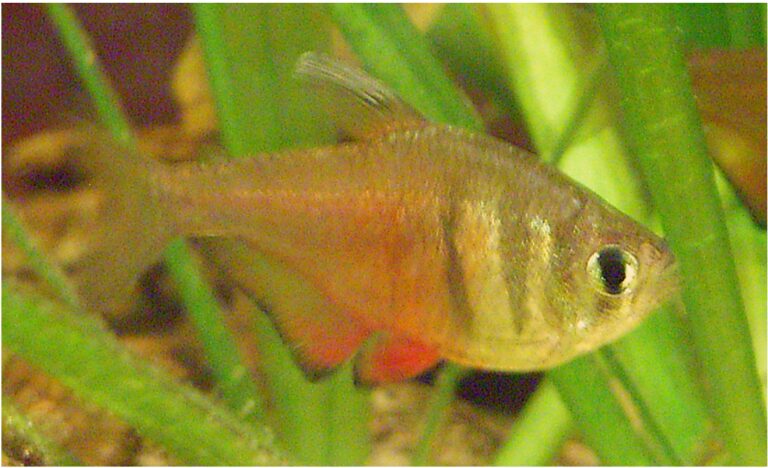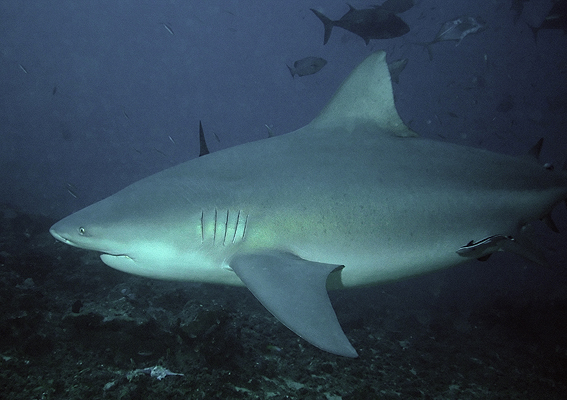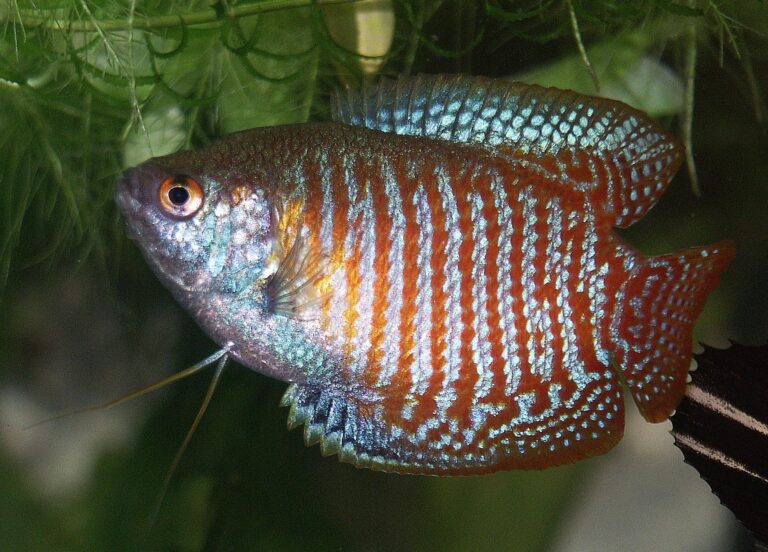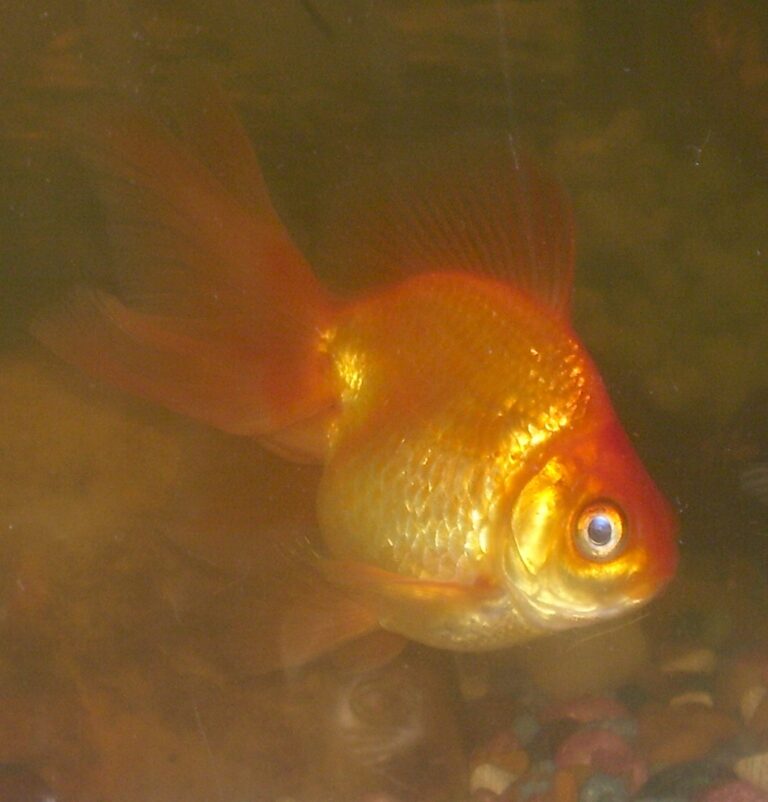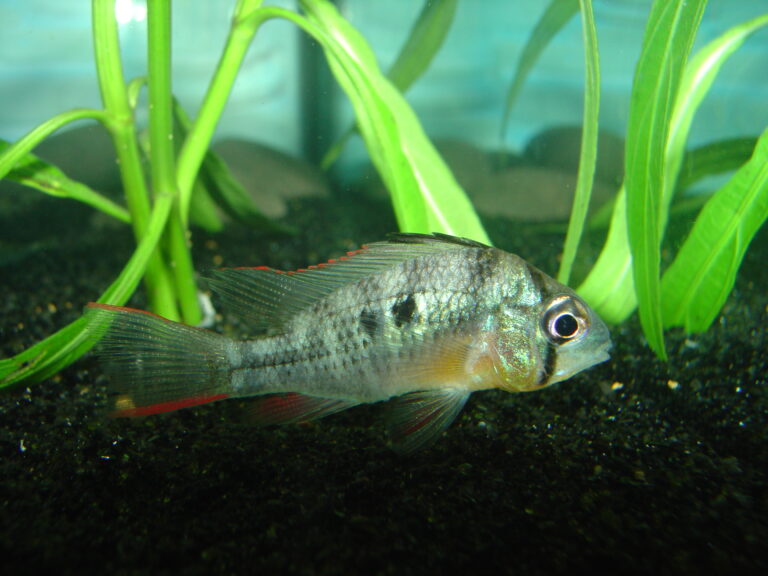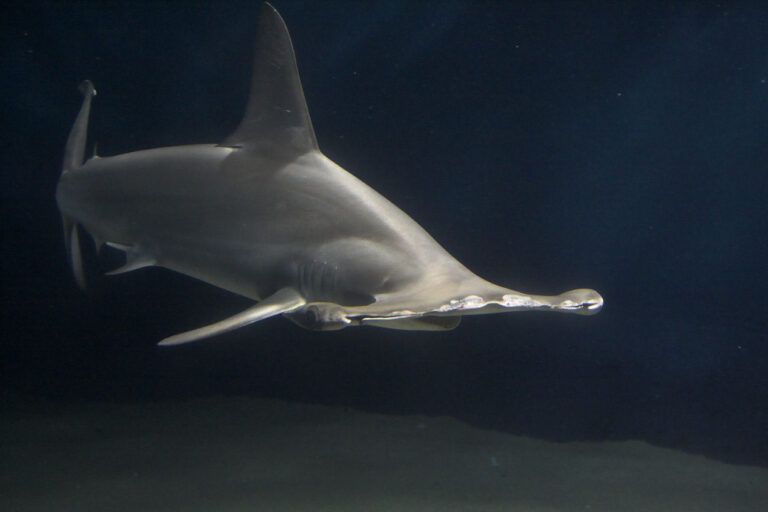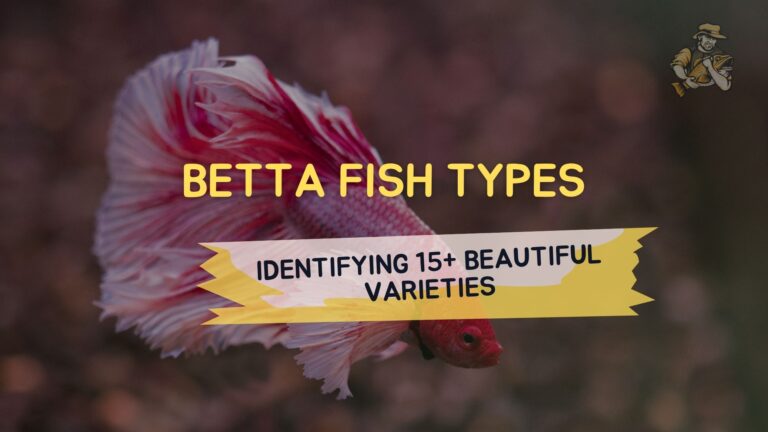Louisiana Redfish Fishing: Best Spots & Tactics for Beginners
By Adam Hawthorne | Last Modified: June 4, 2025
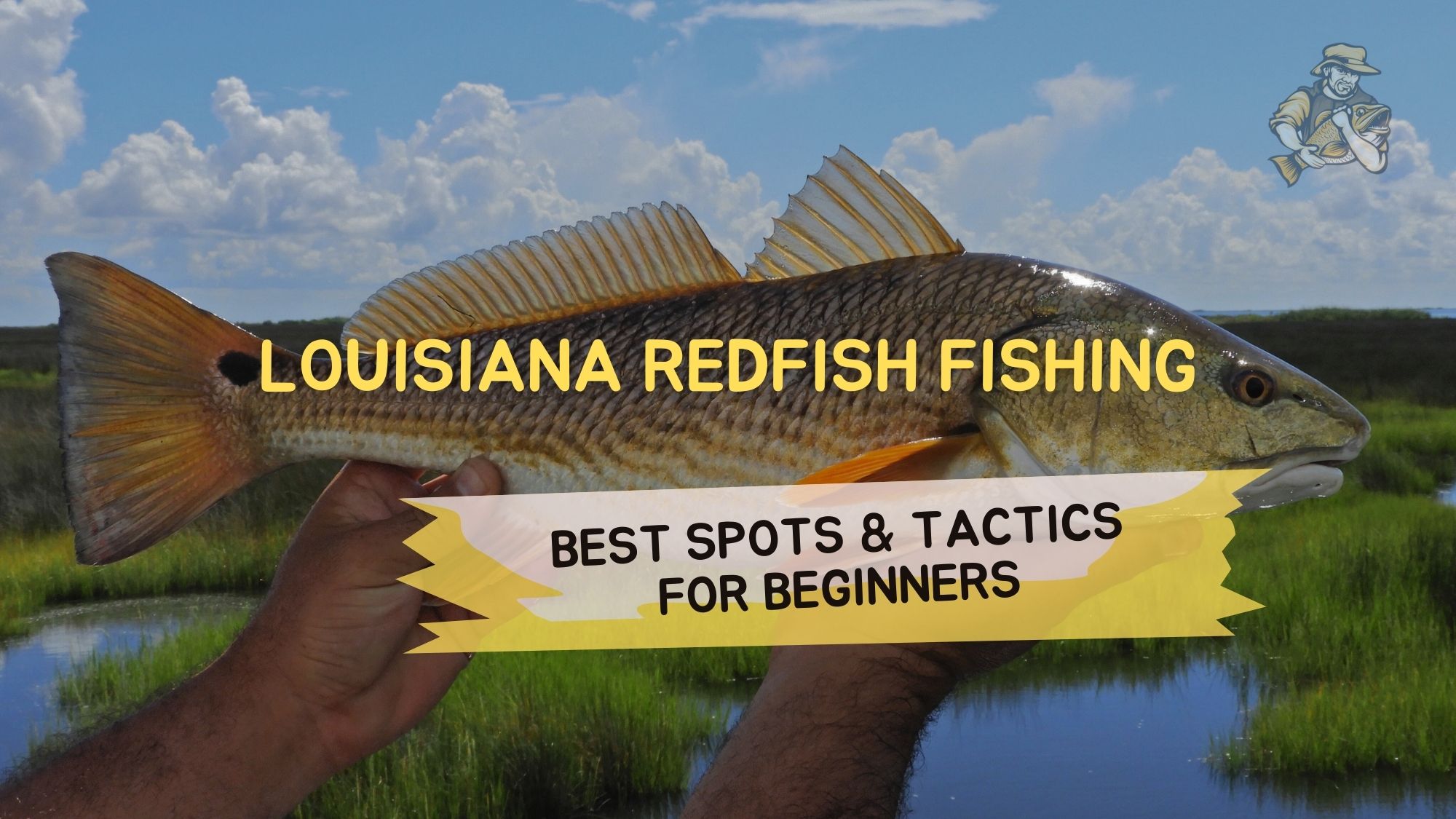
Finding that first bull red is a moment you never forget. The pull, the power – it’s something special. I’ve been chasing redfish (or red drum if you’re being technical) across the Gulf Coast for years, but there’s something about Louisiana’s marshes that keeps me coming back. The folks at Louisiana Sportsman call it “the ultimate inshore gamefish” – and for good reason.
If you’re just getting started with Louisiana redfish fishing, you’ve picked one of the most rewarding species in one of the best locations in the country. The good news? You don’t need fancy gear or decades of experience to have success. What you do need is some local knowledge and a few proven techniques.
Louisiana Redfish Fishing Basics Every Beginner Should Know
Louisiana holds some of the most productive redfish waters in the world. The extensive marsh system, countless bayous, and protected coastal areas create perfect habitat for these copper-colored predators.
Before we dive into specific spots and tactics, let’s cover some redfish basics:
- Size Range: Louisiana redfish typically range from 16-27 inches (called “slot reds”) up to 40+ inches (bull reds)
- Appearance: Copper/bronze body with characteristic black spot on tail
- Habitat: Marsh edges, oyster reefs, structure near channels, shallow flats
- Diet: Primarily crabs, shrimp, mullet, and other baitfish
- Behavior: Often feed by “tailing” (feeding with tails breaking the surface) in shallow water
Something I learned the hard way my first few trips to Louisiana – these aren’t necessarily deep-water fish. One sweltering August morning about five years back, I spent hours drifting deeper channels near Grand Isle without a single bite. It wasn’t until I moved to skinny water along grass lines that I found schools of hungry reds pushing water as they chased bait. Changed my whole approach.
The current Louisiana regulations limit you to 5 redfish per person per day, with a 16-27 inch slot limit (though regulations can change, so always check the Louisiana Wildlife and Fisheries website before heading out).
A Quick Word on Conservation
The Louisiana marsh isn’t just a fishing destination – it’s a national treasure that’s disappearing at an alarming rate. Every year, Louisiana loses football fields worth of coastal marsh to erosion and subsidence. These marshes are the nurseries for the redfish we all love to catch.
When fishing these areas, take care not to damage grass beds with your boat, properly dispose of all trash, and consider practicing catch and release, especially with larger breeding fish.
Top Louisiana Redfish Fishing Locations for Beginners
Louisiana offers so many prime redfish spots it’s hard to narrow them down. Here are five areas that combine good access, consistent fishing, and beginner-friendly conditions:
1. Delacroix
Located about 30 miles southeast of New Orleans, Delacroix is often my first recommendation for beginners. This area features:
- A maze of protected bayous and ponds
- Relatively shallow water that’s perfect for spotting redfish
- Good shoreline access in many areas
- Consistent fishing year-round
The first time I fished Delacroix with my son Tommy, we counted over 20 redfish spotted in a single morning. The clear, shallow water makes it easier to actually see the fish before casting, which is perfect for newcomers.
Marinas like Sweetwater Marina offer launches, guides, and local intel on where fish are biting.
2. Hopedale
Just east of Delacroix, Hopedale offers similar advantages but with slightly different water conditions. The MRGO (Mississippi River Gulf Outlet) channel provides deeper water access to sprawling shallow marsh.
Key benefits for beginners:
- Multiple easy-access launch points
- Protection from rough offshore conditions
- Consistent redfish population
- Mix of shallow flats and deeper channels
During my last trip to Hopedale last fall, I noticed the water levels were lower than usual, which actually concentrated the redfish in predictable locations around deeper holes and channel edges.
3. Venice
While Venice requires a longer drive from New Orleans (about 2 hours), the quality of fishing can be worth it. Known as the “Redfish Capital of the World,” Venice offers:
- Access to both marsh and Mississippi River delta fishing
- Year-round redfish opportunities
- Multiple marinas and guide services
One thing to note – Venice’s proximity to the Mississippi River means water clarity can vary dramatically. After heavy rains upriver, expect more stained conditions, which might require adjusting your tactics.
4. Lafitte
Located just 30 minutes from New Orleans, Lafitte provides excellent redfish opportunities with easy access. The area features:
- A network of bayous and bays
- Good protection from weather
- Several access points and marinas
When I’m short on time but need my redfish fix, Lafitte is often my go-to. The area around The Pen has been particularly productive for me during summer and fall months.
5. Calcasieu Lake (Big Lake)
For those in western Louisiana, Calcasieu Lake near Lake Charles offers excellent redfish action. Different from the marsh environments of southeastern Louisiana, Calcasieu features:
- A large, open bay system
- Clear water opportunities
- Defined oyster reefs and structures
I fished Calcasieu with a buddy who lives in Lake Charles a couple years back, and was impressed by both the size and numbers of redfish along the shallow shorelines. The water clarity makes sight-fishing particularly effective here.
Essential Gear for Louisiana Redfish
You don’t need specialized or expensive equipment to get started with redfish. Here’s a basic setup that won’t break the bank:
Rod and Reel
For beginners, I recommend:
- Rod: 7-foot medium to medium-heavy spinning rod
- Reel: 3000-4000 size spinning reel
- Line: 15-20 lb braided line with 20-30 lb fluorocarbon leader
This setup gives you enough backbone to handle even larger bull reds while maintaining sensitivity for detecting subtle bites.
My primary redfish setup is actually a 7’6″ medium Star Stellar Lite rod paired with a Shimano Stradic 4000. I’ve had this combo for almost 8 years now, and it’s landed hundreds of reds without issue. You definitely don’t need to spend that much though – something like the Ugly Stik GX2 spinning combo will work just fine to get started.
Basic Terminal Tackle
Keep your tackle simple when starting out:
- 1/4 oz and 3/8 oz jigheads
- 3/0 and 4/0 offset worm hooks
- 1/0 to 3/0 Kahle hooks (for live bait)
- A variety of weights from 1/8 oz to 1 oz
- Small barrel swivels
- Fluorocarbon leader material (20-30 lb)
Lures and Baits
Redfish aren’t usually picky eaters, which is good news for beginners. Here are the most effective options:
Artificial Lures
- Soft Plastics: 3-5″ paddletails in gold, white, or chartreuse (brands like Matrix Shad, H&H, or Z-Man)
- Spoons: 1/2 oz gold or copper weedless spoons
- Topwater: Popping corks paired with shrimp imitations
- Crankbaits: Shallow-running models in natural baitfish colors
The simplest and often most effective setup is a 1/4 oz jighead with a white or gold paddletail. This mimics the mullet and other baitfish that redfish love.
Live/Natural Bait
- Fresh or live shrimp
- Live or cut mullet
- Blue crabs (cut in half for larger redfish)
- Live croakers (especially for trophy bulls)
I’ve found that fresh shrimp under a popping cork is hard to beat for consistent action when the bite gets tough. Last spring during a cold front, artificial lures weren’t getting any attention, but switching to shrimp immediately produced a limit of nice slot reds.
Proven Techniques for Louisiana Redfish Fishing
Now for the fun part – actually catching them! Here are some beginner-friendly techniques that produce results:
Popping Cork Method
This is perhaps the most beginner-friendly and effective technique:
- Attach a popping cork about 18-24 inches above your hook
- Add a live shrimp or artificial shrimp lure
- Cast near marsh edges, oyster reefs, or structure
- Pop the cork with sharp rod twitches, then let it sit
- When the cork disappears, set the hook!
The cork serves multiple purposes – it creates noise to attract fish, keeps your bait at the right depth, and serves as a visible strike indicator.
Jig and Paddletail Combo
This is my personal favorite approach:
- Attach a paddletail soft plastic to a jighead (weight depends on depth/current)
- Cast near structure, marsh edges, or visible feeding fish
- Retrieve with a steady swimming action, occasional twitches, or slow hops along the bottom
The key is maintaining contact with the lure to feel the often-subtle strike of a redfish. Sometimes they absolutely crush it, but other times it just feels like a bit of weight.
I remember fishing near Bayou Bienvenue two summers ago when the water was gin clear. I could actually see big reds following my gold paddletail, sometimes for 10-15 feet before striking. That visual experience taught me a lot about how these fish track and attack prey.
Sight Fishing the Flats
When conditions permit (clear water, calm winds), sight fishing is an exciting approach:
- Position your boat upwind of shallow flats or marsh ponds
- Scan for signs of redfish – wakes, mud boils, or actual fish
- Cast beyond the fish and bring your lure into their path
- Watch for the strike or reaction
Polarized sunglasses are absolutely essential for this technique. I prefer amber or copper lenses for the typical stained waters of Louisiana marshes.
Bank Fishing Approaches
Don’t have a boat? No problem. Many areas offer bank fishing access:
- Focus on points, cuts in the marsh, and moving water
- Use live bait under a cork or weightless soft plastics
- Fan-cast to cover water and locate fish
- Pay attention to tidal movement
Some of my most productive redfish trips have actually been from shorelines around the Chef Menteur area. Just finding points where tidal current creates eddies has produced multiple big reds, especially on falling tides.
Seasonal Patterns for Louisiana Redfish
Unlike some species, redfish can be caught year-round in Louisiana. However, their patterns and locations shift with the seasons:
Spring (March-May)
- Redfish begin moving into shallower bays and marsh areas
- Focus on warming mud flats, especially on sunny afternoons
- Shrimp begin to appear in the system, making popping cork rigs effective
- Water clarity can be challenging after spring rains
Summer (June-August)
- Early mornings and evenings are most productive due to heat
- Look for redfish “tailing” in shallow water at dawn
- Topwater lures can be extremely effective, especially early
- Deeper channels provide refuge during midday heat
Summer fishing in Louisiana can be brutally hot. I learned to start at daybreak and get off the water by 10am, then maybe go back out near sunset. The best summer redfish trip I ever had was leaving the dock at 4:30am and finding tailing redfish in a shallow pond off Lake Borgne right as the sun cracked the horizon.
Fall (September-November)
- Generally considered the prime season for Louisiana redfish
- Cooling water temperatures trigger more aggressive feeding
- Baitfish migrations concentrate redfish in predictable areas
- More stable weather patterns mean more consistent fishing
Fall is without question my favorite time for Louisiana redfish. The fish seem to be everywhere, feeding aggressively ahead of winter. Last October, my buddy Mike and I found schools of bull reds blowing up on mullet near the MRGO rocks. We caught and released over 20 fish between 30-40 inches in a single morning.
Winter (December-February)
- Redfish often school in deeper bayous and channels
- Slower presentations typically work better
- Low winter tides can concentrate fish in holes and depressions
- Clear water makes stealth more important
Winter requires more patience but can produce the biggest fish of the year. My largest-ever Louisiana redfish (just over 42 inches) came on a brutally cold January day fishing a deep hole near Bayou La Loutre.
Understanding Tides for Better Redfish Success
If there’s one factor that consistently determines redfish behavior in Louisiana, it’s tidal movement. Here are the basics:
- Rising (Incoming) Tide: Pushes redfish into the marsh and up onto flats to feed. Great time to fish marsh edges and newly flooded areas.
- Falling (Outgoing) Tide: Concentrates redfish in channels and deeper holes as water drains off flats. Focus on cuts, channels, and depressions.
- Tidal Range: Louisiana doesn’t have extreme tidal ranges (typically 1-2 feet), but even these small changes significantly impact fish behavior.
Learning to read water movement is crucial. Look for:
- Points where current creates eddies
- Cuts where water drains out of marsh ponds
- Depth changes where fish stage during changing tides
One trick I picked up from a veteran guide in Hopedale – find the last drain in a dead-end canal or bayou, and fish it hard during the last hour of falling tide. Redfish have no choice but to funnel through these areas as water levels drop.
Common Mistakes Beginners Make When Fishing for Louisiana Redfish
I’ve made plenty of mistakes pursuing Louisiana reds over the years. Here are some common ones to avoid:
Ignoring the Tide
Many beginners fish whenever it’s convenient, regardless of tide. This is a huge mistake. Even the best spots might be completely unproductive at the wrong tide stage. I use the tide charts on Louisiana Fishing Reports to plan my trips around optimal tidal movement.
Staying in One Spot Too Long
If you haven’t had a bite in 15-20 minutes, it’s usually time to move. Redfish tend to be either feeding actively or not present at all. Don’t waste hours in unproductive water.
Using Gear That’s Too Heavy
I see many beginners using heavy offshore tackle for inshore redfish. This reduces casting distance and sensitivity, leading to missed strikes. Scale down to appropriate inshore gear.
My first Louisiana trip, I brought my heavy grouper rod from Florida, thinking I needed the backbone for big bulls. Not only was it exhausting to cast all day, but I missed numerous subtle strikes because I couldn’t feel them through the broomstick.
Overlooking Shallow Water
Many new anglers focus exclusively on deeper channels and passes, missing the fact that redfish often feed in water so shallow their backs are exposed. Don’t be afraid to push into skinny water, especially early and late in the day.
Being Too Obvious
Redfish can be remarkably spooky in shallow, clear water. Avoid unnecessary noise, big splashy casts, and running your motor through potential fishing areas.
Frequently Asked Questions About Louisiana Redfish Fishing
What size redfish can I keep in Louisiana?
Currently, Louisiana regulations allow harvest of redfish between 16-27 inches (slot limit), with a daily bag limit of 5 per person. You are allowed to keep one fish over 27 inches as part of your daily bag limit. Always check the Louisiana Department of Wildlife and Fisheries website for the most current regulations before your trip.
What is the best time of year to catch redfish in Louisiana?
While redfish can be caught year-round in Louisiana, many anglers consider fall (September-November) the prime season. Water temperatures are moderate, weather is generally stable, and redfish feed aggressively preparing for winter. That said, I’ve had exceptional trips in every season.
Do I need a fishing license for Louisiana redfish?
Yes, non-residents need a Louisiana Basic Fishing License plus a Saltwater License to fish for redfish in Louisiana waters. Louisiana residents 17 and older also need both licenses.
What’s the difference between a redfish, a red drum, and a bull red?
They’re all the same species (Sciaenops ocellatus). “Redfish” and “red drum” are two names for the same fish. “Bull red” refers specifically to larger, mature redfish typically over 27 inches. In Louisiana, many anglers call the smaller “slot” fish simply “reds” and reserve “bull reds” for the trophy-sized fish.
Can redfish be caught from shore in Louisiana?
Absolutely! There are many productive bank fishing locations throughout coastal Louisiana. Some popular shore fishing spots include the MRGO rocks, Lake Pontchartrain Causeway, Grand Isle jetties, and various roadside locations in Lafitte and Delacroix.
During a family trip when I didn’t have boat access, I caught several nice reds fishing from the rocks along Highway 23 in Plaquemines Parish. You’d be surprised how many quality fish are within casting distance of shore.
What’s the best bait for Louisiana redfish?
If I had to pick one “can’t miss” bait, it would be fresh shrimp under a popping cork. However, soft plastic paddletails on jigheads are nearly as effective and much more convenient. For trophy bull reds, cut mullet or half a blue crab often produces the largest fish.
Final Thoughts on Louisiana Redfish Fishing
Louisiana offers what might be the finest redfish fishery in the world. The vast marsh system, abundant food sources, and relatively light fishing pressure (compared to Florida, for instance) create perfect conditions for both numbers and size.
As a beginner, don’t be intimidated. Start with the basic techniques we’ve covered, focus on learning to read the water and tides, and you’ll be catching Louisiana reds in no time. There’s something special about seeing that copper flash as a redfish takes your lure – a moment that keeps anglers coming back to these waters year after year.
Remember that the Louisiana marsh is a fragile environment facing serious challenges from coastal erosion, pollution, and habitat loss. Practice conservation-minded fishing, keep only what you’ll eat, and do your part to preserve this incredible resource for future generations.
If you’re planning your first Louisiana redfish trip, consider hiring a guide for a day to accelerate your learning curve. The knowledge gained will pay dividends on future trips, and most Louisiana guides are excellent teachers willing to share their local expertise.
Now get out there and find your own Louisiana redfish story.

Meet Adam Hawthorne
I’m a lifelong fishing enthusiast who’s spent years exploring rivers, lakes, and oceans with a rod in hand. At Fishing Titan, I share hands-on tips, honest gear reviews, and everything I’ve learned about fish and ocean life, so you can fish smarter and enjoy every cast.
Share:

Meet Adam Hawthorne
I’m a lifelong fishing enthusiast who’s spent years exploring rivers, lakes, and oceans with a rod in hand. At Fishing Titan, I share hands-on tips, honest gear reviews, and everything I’ve learned about fish and ocean life, so you can fish smarter and enjoy every cast.
Related Articles
-
How to Become a Better Fisherman in 2025: Master These 5 Skills
There’s something magical about that moment when your line goes tight and you feel the unmistakable pull of a fish on the other end. Whether…
-
Flame Tetra
The Flame Tetra (Hyphessobrycon flammeus) stands as one of the most recognizable and beloved freshwater aquarium species in the characin family. This vibrant South American…
-
Bull Shark
The Bull Shark represents one of the most formidable apex predators in marine ecosystems worldwide. Known scientifically as Carcharhinus leucas, this remarkable species has earned…
-
Gouramis
Gouramis represent one of the most fascinating and diverse groups of freshwater fish, belonging to the family Osphronemidae within the suborder Anabantoidei. These remarkable fish…
Fish Species
-
Fantail Goldfish
The Fantail Goldfish represents one of the most recognizable and beloved fancy goldfish varieties in the aquarium trade worldwide. Known scientifically as *Carassius auratus*, this…
-
Bolivian Ram
The Bolivian Ram (Mikrogeophagus altispinosus) stands as one of South America’s most captivating cichlid species, representing a prime example of adaptive evolution within the diverse…
-
Hammerhead Shark
The Hammerhead Shark represents one of the most distinctive and fascinating apex predators in marine ecosystems worldwide. These remarkable cartilaginous fish, scientifically classified under the…
-
Betta Fish Types: Identifying 15+ Beautiful Varieties
Walking into a pet store’s fish section always gives me that same feeling of wonder, especially when I reach the betta display. Those vibrant colors…


